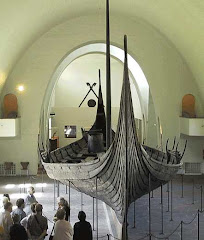2.26.2008
The Saga of the Confederates
Odd's father was a very interesting character. He was very wise, crafty, and played everyone just right. After reading the saga, even though I liked it, I had a hard time believing it. Everything was so convenient and worked out perfect. The two confederates that he Olfeig picked out played right into his hand. It just seemed odd...
2.18.2008
The Saga of Hrafnkel Frey's Godi
2.11.2008
Havamal
In the Havamal, there was definitely a lot of "proverbial-esque" poems. I noticed that there was quite a bit of reference to what a 'wise man' does, and I chose my example from that genre. Also, since we all live in a college atmosphere, I would point out the multiple references to ale, alcohol consumption. From what I read in the Havamal, ancient Icelanders valued the ability to show restraint when consuming. However, from what I have read of the sagas, people often times drank excessively and got very drunk. This leads me to the conclusion that the ideal icelander was one who could drink huge amounts of alcohol, and stay sober enough that it appeared he was showing restraint.
Anyway, I took my example from stanza 57:
57. A brand from a brand | is kindled and burned,
And fire from fire begotten;
And man by his speech | is known to men,
And the stupid by their stillness.

